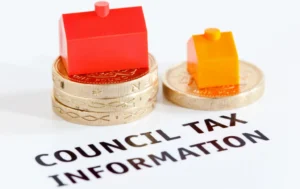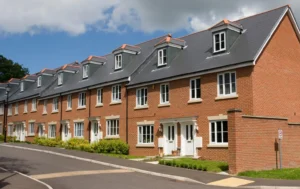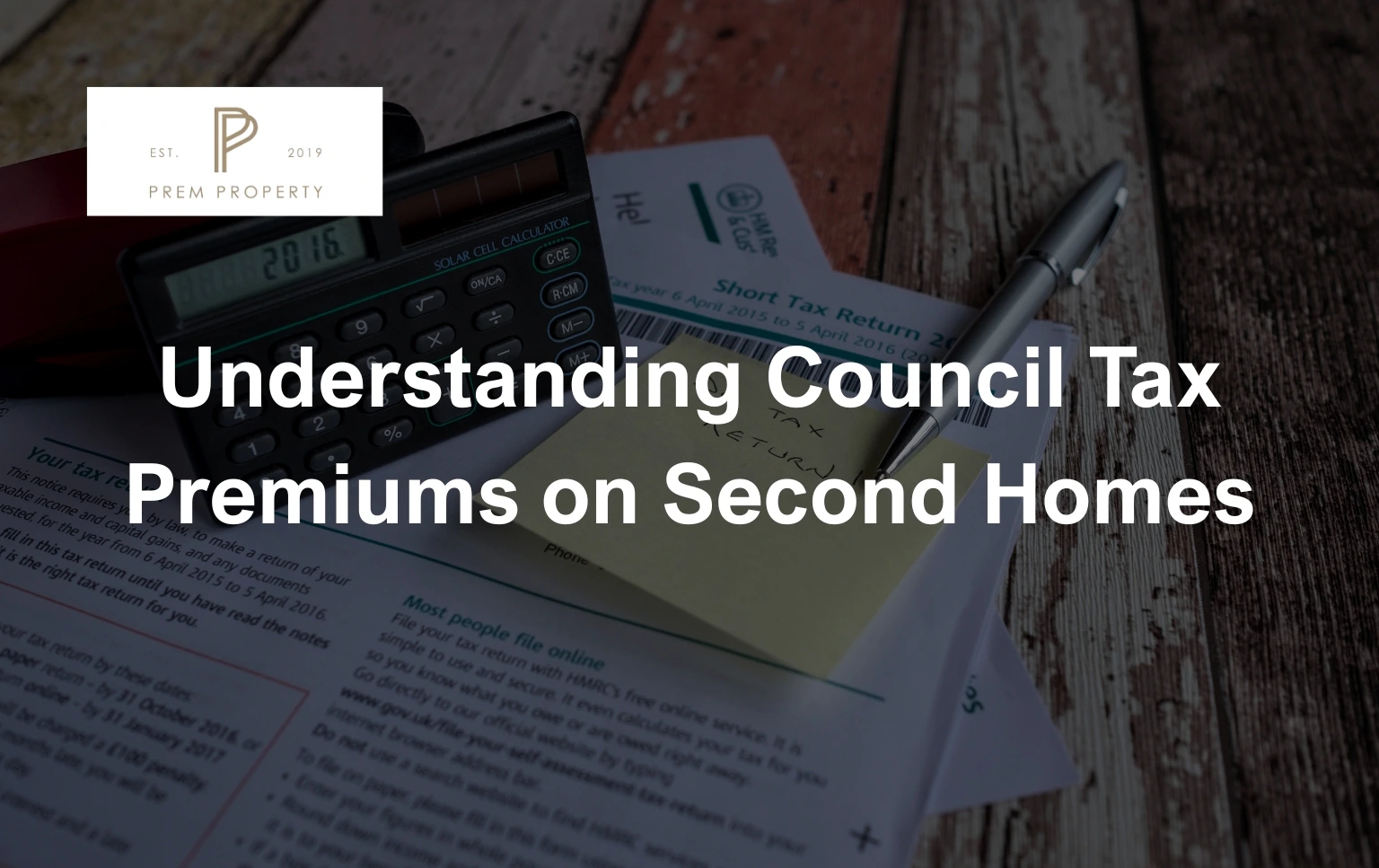Housing affordability has become a serious concern across the UK. One major issue is the increasing number of second homes, particularly in tourist-heavy areas like Wales. Local authorities are now taking action by introducing council tax premiums on second homes and long-term empty properties.
In this article, we’ll explore what tax premiums on second homes are, how they work, the impact on local communities, and how a guaranteed rent solution may offer a practical way forward for homeowners.
What Is a Council Tax Premium on Second Homes?
A council tax premium is an additional charge added to the standard council tax rate. It applies to homes that are not used as a main residence or that have been empty for long periods.
Since April 2023, councils in Wales have been allowed to increase these premiums by up to 300%, meaning owners can pay up to four times the normal rate.
The goal is to free up housing stock, boost the local rental market and discourage homes from sitting empty for most of the year.

Why Are Second Homes a Concern in Wales?
Rural and coastal communities like Pembrokeshire attract many second-home buyers. These homes are often left unoccupied for much of the year.
This limits the number of available properties for local people and pushes up prices. In turn, this weakens community life and creates “ghost towns” in low seasons.
By charging higher council tax on second homes, local authorities aim to reduce demand, increase supply, and generate income to support affordable housing.
Pembrokeshire’s £12.5 Million Windfall from Tax Premiums
Pembrokeshire County Council expects to raise £12.5 million in 2024–25 from council tax premiums on second homes and empty properties.
In 2024, the county had 3,271 second homes, down slightly from the previous year. This drop may reflect the growing financial pressure on second homeowners due to the rising premium rates.
Previously set at 200%, the council voted to reduce the premium to 150% in late 2023. While this is still a significant cost, it marks a shift in approach.
Tax Premiums and the Local Tax Base
During a recent council meeting, a resident raised concerns that the tax premium might be used to inflate the local tax base—a move that allows councils to generate more income.
Cllr Michelle Bateman responded that this was not the intention. Instead, any tax base increase was a side effect of the policy, not its primary goal.
Still, the ability to reinvest the funds into public services and housing remains a strong benefit of the premium scheme.

Guaranteed Rent Solution: A Win-Win Solution for Homeowners and Councils
One effective alternative for second-home owners facing steep tax premiums is to join a guaranteed rent solution.
In a guaranteed rent solution, a property owner rents their home to the local authority or a housing provider for a fixed period. In return, they receive reliable monthly payments, even during void periods.
This option benefits everyone:
- Homeowners avoid paying high premiums on underused homes.
- Local councils gain access to desperately needed housing.
- Tenants, including families and key workers, gain stable homes.
By joining a guaranteed rent solution, second-home owners can turn a liability into an asset while actively helping the community.
How a Guaranteed Rent Solution Helps Offset Council Tax Premiums
Guaranteed rent solutions can make owning a second home more financially viable. Instead of paying a 150% or 300% council tax premium, owners receive consistent income and avoid long-term vacancy charges.
This can also improve the property’s classification. A second home in active use may no longer be charged a premium, especially if it’s rented long-term.
By working with the council or a trusted letting agency, owners also avoid many of the headaches of traditional tenancies, such as missed rent or maintenance issues.
Arguments For and Against the Tax Premium Policy
Let’s explore both sides of this ongoing debate.
Supporters say:
- It discourages speculative property buying.
- It brings more homes into use for locals.
- It generates vital funding for housing projects.
- It supports community regeneration.
Critics argue:
- It unfairly targets those who maintain empty homes responsibly.
- Wealthy owners may simply pay the premium without changing behaviour.
- It may cause some owners to sell up or leave properties empty deliberately.
- Councils may be tempted to use it just to boost income.
Who Pays the Tax Premium on Second Homes?
The tax premium applies to homes that:
- Are furnished but not a main residence.
- Are empty for more than a year, in some cases.
Some owners of holiday lets may be exempt if they qualify as self-catering accommodation and meet specific rental criteria. Certain properties may also fall under exemptions, such as when the owner is receiving long-term care or when legal issues delay occupation.
Homeowners should check with their local authority for the latest rules and rates, as these can vary by area.
How to Reduce or Avoid the Premium
There are several legal ways to reduce or avoid paying the premium:
- Switch the property to a rental (long-term or short-term).
- Join a guaranteed rent solution to generate income and maintain occupancy.
- Apply for a valid exemption if your situation qualifies.
- Reclassify the property if it is no longer your second home.
The Bigger Picture: Housing Equality and Sustainability
Council tax premiums on second homes are just one part of broader housing reform. The Welsh Government wants to ensure homes are available and affordable for locals.
In high-demand areas like Pembrokeshire, second homes can block access to housing and hurt community life. Tax premiums, paired with solutions like guaranteed rent, can restore balance.
It’s not just about revenue—it’s about sustaining liveable communities year-round.

What’s the Long-Term Impact on Homeowners and Renters?
For homeowners, the financial pressure of tax premiums could be significant. But options like renting out the property or joining a guaranteed rent solution can help avoid these costs.
For renters and communities, these policies open up more housing, improve service funding, and reduce property speculation. Over time, more homes can be put to better use.
Homeowners who adapt early by shifting to rental models may actually come out ahead financially—while supporting their local areas in the process.
A Balanced Approach to Second Homes
The tax premium on second homes is an evolving policy, driven by the urgent need for more housing. Councils like Pembrokeshire are making difficult choices to protect the long-term health of their communities.
For homeowners, this means carefully weighing the costs of holding on to an underused property. A guaranteed rent solution offers a practical and sustainable alternative that benefits all parties involved.
Whether you are a second homeowner or a policymaker, the key is to think long-term. Housing is not just an investment—it’s a resource our communities can’t afford to waste.
✅ Key Takeaways:
- Council tax premiums are rising to curb second home ownership in Wales.
- Pembrokeshire plans to raise £12.5 million from these premiums in 2024.
- A guaranteed rent solution provides a way for owners to avoid high premiums.
- Renting out a second home can reduce or eliminate council tax premiums.
This approach helps communities access more housing and strengthens the local economy.

